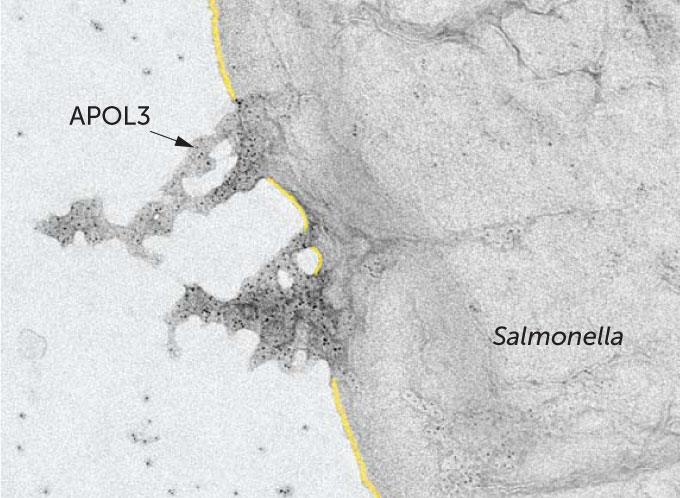By Himasutha Reddy
New Haven, July 16: A group of researchers from Yale University discovered a new soap-like substance formed by a few cells when they come in contact with new pathogens. A pathogen is any substance such as bacteria or any other microorganism that has the potential to cause a disease. However, these cells that release this soap-like substance are not part of the immune system. The immune system consists of specialized organs, cells and tissues that destroy pathogens. MacMicking and colleagues infected the human epithelial cells in a laboratory with Salmonella bacteria, which affects the interior of the cells.
The team observed over 19,000 human genes to detect the genes that have any protection against the Salmonella bacteria.
A gene that contained information for protein production named APOL3 showed a different mechanism to protect itself from the Salmonella bacteria. Salmonella microbes have a double membrane (a membrane is a layer that acts as a boundary), an outer membrane and an inner membrane. Therefore, an additional amount of work is required for the bacteria to be killed.
The research revealed that APOL3 and another molecule named GBP1 collectively work together to achieve this task. GBP1 helps to unwind the bacteria’s outer membrane. APOL3 is a protein that has a part that is attracted to the water molecules and a part that is attracted to the lipids (fat/oil molecules). A lipid is a molecule that is not soluble in water.

This action helps APOL3 protein target the bacteria’s inner membrane, attaches itself to it, and then dissolves the membrane into the fluid inside the cell. APOL3 only targets the lipid molecules found in bacteria, and its activity is restricted by a molecule named cholesterol in the human cell membranes. Therefore, it does not affect human cells.

